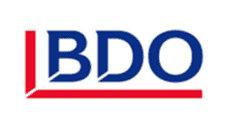Gartner recently published two magic quadrant reports, one covering financial close and consolidation and the other covering financial planning software. Both areas represent critical financial processes that are key to effective corporate performance management (CPM). Read on to learn why OneStream was recognized as a leader in both reports and what this means for customers.
Gartner Evaluates Two Key Software Segments
The Gartner Magic Quadrants are one of the most respected industry analyst reports and are highly influential in helping guide evaluation teams in identifying their shortlist of vendors to investigate.

In Q3 of 2023, Gartner published two Magic Quadrant reports that are important for evaluators in the office of Finance. This includes:
- Gartner® Magic Quadrant™ for Financial Close and Consolidation Solutions1
- Gartner® Magic Quadrant™ for Financial Planning Software2
The research across these two areas covered a broad range of functional requirements and was based on extensive RFIs, product demonstrations and customer references. And I’m happy to report that OneStream was named as a Leader in both reports. Why?
In the reports, the Gartner analysts recognized our broad capabilities provided through OneStream’s Intelligent Finance Platform as well as the ability for customers to extend the platform with additional solutions available from our Solutions Exchange such as Workforce Planning, Capital Planning, Account Reconciliations, Transaction Matching, ESG Reporting and more. Key strengths that were called out include our data integration capabilities, Extensible Dimensionality®, advanced financial intelligence, scalability and innovation.
So why is this important to buyers? It’s important, and valuable to buyers because with OneStream they can get best in class capabilities in a single solution vs. having to implement and integrate multiple software products to support these critical financial processes. Conversely, customers don’t have to compromise on functionality to have a unified platform supporting these critical financial processes.
Unifying Corporate Performance Management Processes
While Gartner evaluates Financial Close and Consolidation vs. Financial Planning as two separate software categories, the reality is that enterprises need to align these processes and their data to have an effective corporate performance management (CPM) process.
This process includes goal setting, modeling, planning, consolidating, reporting and analyzing financial and operational results and continuously refining plans and resource allocations to optimize performance. If the data required to execute the CPM process lives in two or more systems, with different meta data structures and levels of detail, then it must be exported and imported between systems, reconciled and aligned – which takes a lot of time, effort and resources.
Because of this, most enterprises are now adopting cloud-based CPM software solutions that can support their financial close, consolidation and reporting, as well as financial budgeting, planning and forecasting processes, and more.
Taking CPM to the Next Level
While many enterprises are working to migrate from legacy CPM applications and spreadsheets to modern, cloud-based CPM solutions, most OneStream customers have already made the leap and are leveraging our unified platform to support their core financial performance management requirements around financial close and consolidation as well as planning, budgeting and forecasting.
Many OneStream customers are extending their investment and leveraging the platform to support operational planning and analytics, not just monthly, but on a weekly or daily basis. And a growing number are taking the next step, embracing AI-driven forecasting to increase the speed and accuracy of their demand planning and revenue forecasting to support more agile decision-making. We call this concept CPM+.

Delivering Exponential Customer Value
As depicted in the graphic above, as enterprises move through the process of extending their CPM processes and OneStream platform investment from financial to operational areas of the business, and from monthly to weekly or daily iterations, they deliver a higher degree of value to the business. Here are a few customer examples:



This article first appeared on OneStream Software blog page by John O’Rourke



